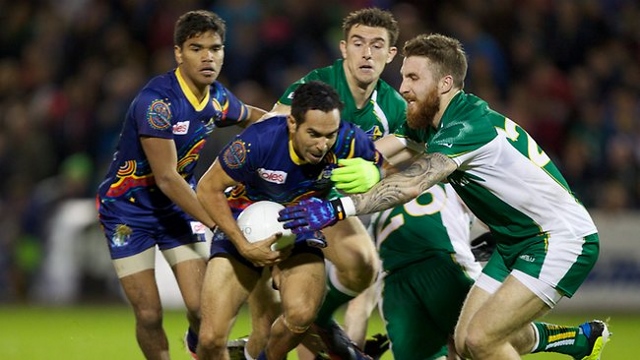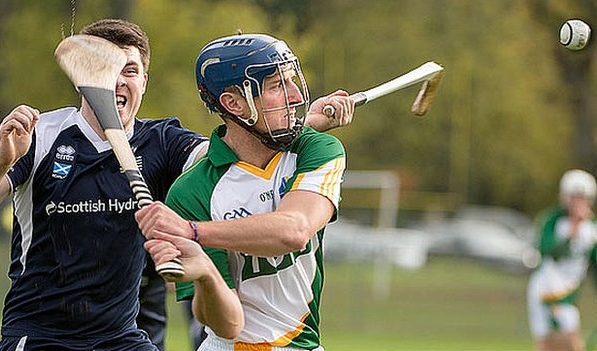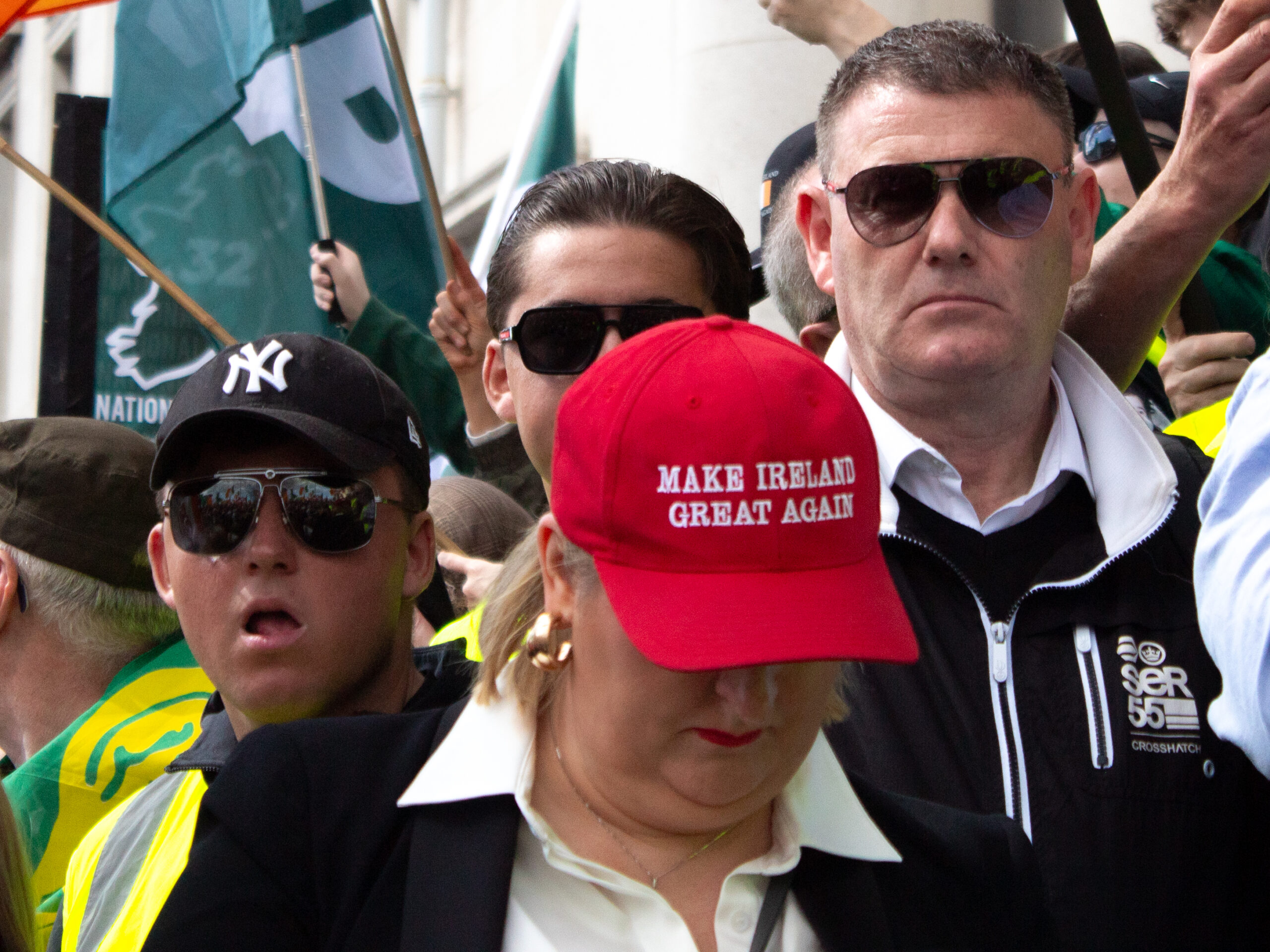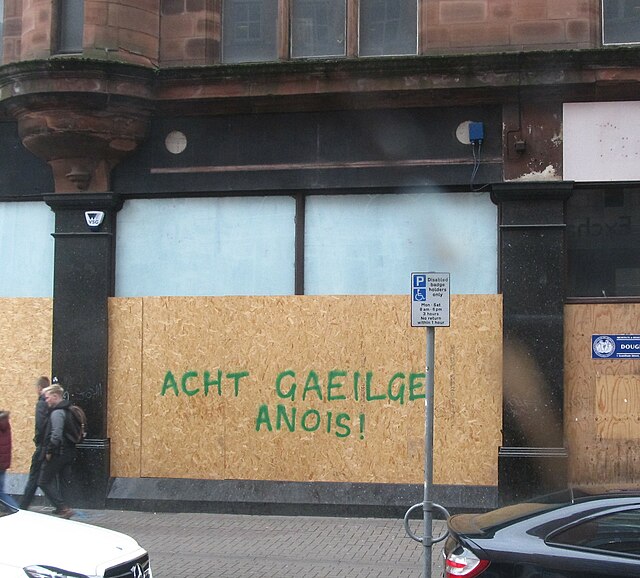Conor Bates | Sports Editor
After every Compromised Rules series, pretty much without failure, the talk of the media outlets turns to the ever rumbling debate: will there be another year? To date the answer has mostly been yes, with only cancellations in 2007 and 2009 marring the occurrence rate for the hybrid competition. Over the years numerous problems have been cited as reasons for cancelling the initiative; ambivalence on the part of the Australians leading to lack of competition, overt aggressiveness ruining the nature of the game, lack of interest from fans, and the high costs associated with running a money-losing contest.
All of these are valid concerns. In recent years, Australia have publicly displayed apathy towards the idea, sending younger, rookie players from lower ranking teams, and in 2013 sending a team made of entirely indigenous players. This did not play to their advantage, as they lost the two-game series by a record 101 points. This disparity won’t increase the attractiveness of the games, and a 28,000 turnout for the final game in Croke Park is evident of the lack of feeling. Since its inception in 1967 as a world tour, and its formalisation as a three game series in 1984, the steady decline has been omnipresent. After an eight year hiatus in 1990, the contests returned in 1998 as a scaled down two match series, thanks in no small part to the competitive and negotiating guile of the late Jim Stynes.
The recent incarnations haven’t been much better. Chris Johnson striking Philip Jordan and Mattie Forde in 2005, and Danyle Pearce knocking out Graham Geraghty in 2006, are some of the uglier scenes that have punctuated the matches. Australia chose not to travel in 2009 citing economic problems, and Australian journalist Mike Sheahan has noted on several occasions that Australians simply don’t care about the longevity of International Rules. But we should.
For one, the games are entertaining. For anyone who follows GAA or enjoys a game of football, the mixed rules matches provide a flavour of similar, but different; a chance to unite under the one banner in a game resembling our own is a rarity and a spectacle that we should all enjoy. Similarly, for a nation who thrive on sport and competition, a chance to take on Australia, a favourite competitive rival of ours, is always worth seizing. Another vital reason for retaining the games strikes to the core of the Irish-Australian relationship. Given the historical and present social, sporting and economic ties to Australia, maintaining the series beyond 2014 is worthy of our endeavour, as was noted at length by Irish manager Paul Earley.
However, the best reason to keep the International Rules series has very little to do with Australia, or even football, for that matter. It does have a lot to do with history, and hurling.
The best reason for us to keep playing the International Series with Australia, is because it means we can keep playing the International Series with Scotland. Away in the background, and disappointingly out of sight, the game of shinty-hurling is truly a sight to behold, and is most definitely worth fighting for. Beginning in 2003, ten series have been played between Ireland and Scotland. Ireland have the edge overall, with five wins to Scotland’s four; a draw in 2004 leaves the statistic in Ireland’s favour. Although it only attracts a modest volume of fans, the trajectory of the composite game has gone in the opposite direction to that of the Antipodean exploit, with an expansion of the game occurring in 2010, from an annual match, to a two game series.
As well as the pure sporting excitement of shinty-hurling, the game is of interesting cultural and historical significance. Shinty, the preferred amateur game of the Scottish highlands, has an intrinsically linked history to our national game. Indeed, shinty is still played in the glens and vales of Ulster. Although there is some debate about which came first, it is widely accepted that during the British colonisation of Ireland, we played two forms of hurling, separated by seasons and geography. Modern shinty, or camán, was a winter game played in the north, while hurling and camogie, or iomán, were summer games played in Wexford and Waterford, amongst other local counties. In that sense, combining the two sports is more natural than any conjoining of Gaelic football and Australian football.
While the sport of shinty-hurling is a truly enthralling one, and it has enjoyed growing popularity, and some television coverage, it is sadly still too niche a sport to survive on its own. The International Rules games in 2014 will go ahead between Ireland and Australia, and Ireland and Scotland. Without the security of future marquee series’ down the line, the ability of the regrettably smaller matches to stand alone would no doubt come into question. If they could garner more individual exposure, perhaps they would go on, but without the support of football, it would be nigh on impossible, in this arena, for hurling and shinty to flourish.








